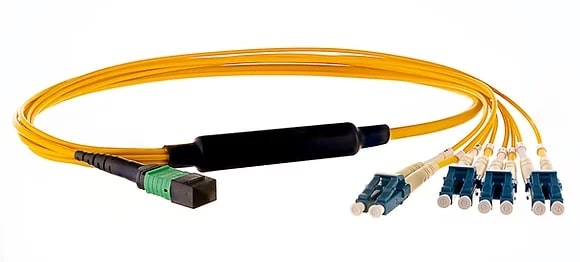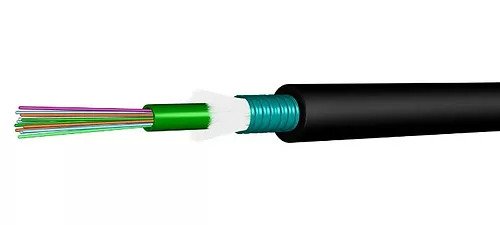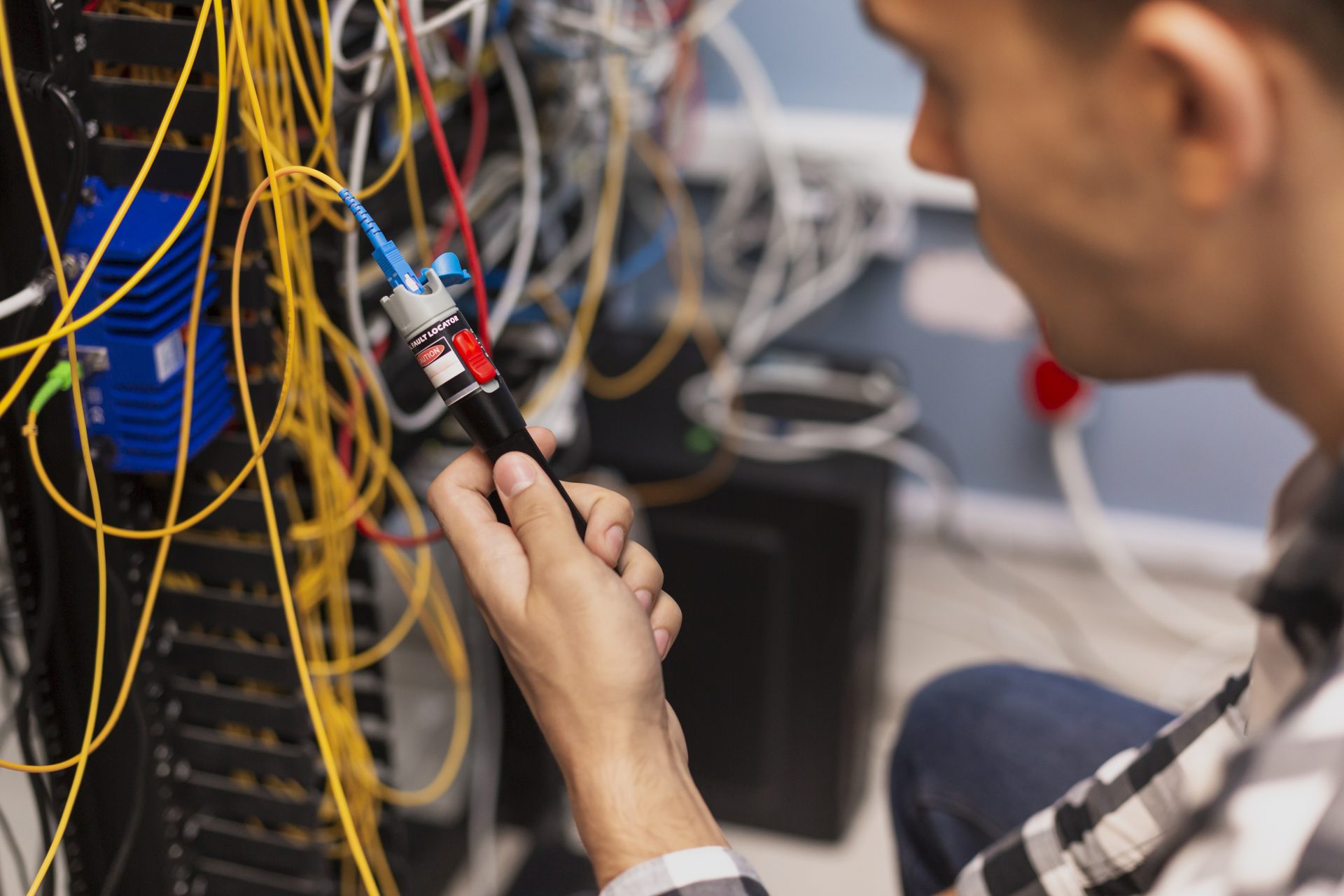For around 200 years, copper cables have been used to transmit data; however, there is a newer and faster alternative that is quickly seeing copper cables become less popular. The alternative to a copper cable is a fibre optic cable.
A Fibre Optic Cable is used to transmit data at a high speed over a long distance, and it is often found in networking industries. For example, it is becoming increasingly popular for fibre optic cable to be used by telephone, computer, and internet providers.
Altimex provides a broad range of fibre optic services, including external and internal cables, that are manufactured on a turnkey basis.
What Are Fibre Optic Cables Made Of?

Fibre optics are network cables that are made from a transparent material, such as glass or plastic, to insulate the small glass fibres within. These fibres are very fine strands with a centre that is called the core.
This type of cable has revolutionised many industries since they have a high carrying capacity, and a higher bandwidth than copper cables allow, which was the previous popular cable used to transmit data.
As previously mentioned, fibre optic cables can transmit data at a high speed and over long distances, allowing television, internet, and telephone services to deliver data quickly, to a wide number of people, without little interference.
Altimex offers various fibre optic services/solutions, which are as follows:
Fibre Patch Cords

Found in many businesses and homes, Fibre Patch Cords are fibre optic cables that have connectors at each end to enable it to easily connect equipment together, such as CATVs (community antenna televisions) to routers.
In simple terms, it “patches” a signal from one device to another.
All assemblies are fully tested by Altimex prior to delivery and installation.
Multi Fibre Assemblies

Altimex offers various types of Multi Fibre Assemblies, such as tight-buffered solutions, which are suitable for indoor and outdoor ducts, and breakout solutions, which are suitable for demanding data centres.
Bulk Fibre Cables

Available in drums or cut-to-length, Bulk Fibre Cables are available at Altimex to suit the varying needs and demands of homes and businesses.
Data Centre Solutions

Altimex offers innovative Data Centre Solutions that focus on the customer’s needs. These include:
- Chassis – 1U (1 unit) and 2U (2 unit) Chassis.
- Cassettes – LC Cassettes, SC Cassettes, Copper Cassettes, and Splice Modules.
- Trunk Cables – OS2 Trunk Cable and OM3/OM4 Cable.
- Breakout Cables – OS2 Breakout Cable and OM3/OM4 Breakout Cable.
How Does Fibre Optic Work?

Fibre optic cables work by transferring information via pulses of light. This light passes through the core of the tiny strands of glass which are almost as thin as human hair.
These strands are surrounded by another layer of glass which is known as cladding. The cladding reflects the light inward, so that it repeatedly bounces against the glass walls, helping to avoid signal loss.
The fact that light is reflected inward, with the information coded in the rays, also allows it to easily travel through the strands even if there are bends in the cable.
Fibre optic cables dissipate hardly any heat and are more resistant to the weather compared to copper cable.
Fibre Optic Cable Types

There are different types of fibre optic cables; however, there are primarily just two types that are used:
Single-mode fibre (SMF)
This type of cable has a narrow core, allowing only one ray of light. They are made up of very thin glass strands, and a laser is used to generate light. SMF is generally used for long distances as it has a high bandwidth.
Multi-mode fibre (MMF)
This type of cable has a wide core, allowing several rays of light. In MMF, LEDs are used to generate light, and they are generally used for short distances.
Different Types Of Bulk Fibre Cables
1) Tight Buffered Fibre Cable

Altimex offers Tight Buffered Fibre Cable, which includes the following features:
- Designed for internal and external use.
- Can contain up to 24 fibres.
- The outer jacket is water and moisture-resistant as well as flame-retardant.
- Can be single-mode or multi-mode, depending on the requirements.
2) Universal Distribution Standard Loose Tube

Altimex offers Universal Distribution Standard Loose Tube, which includes the following features:
- Designed for internal and external use.
- Can contain up to 24 fibres.
- Suitable for homes, businesses, and campuses.
- Single gel-filled tube.
3) Universal Distribution Loose CST Cable (up to 24 fibres)

Altimex offers Universal Distribution Loose CST Cable (up to 24 fibres). CST refers to the armour, which is made from corrugated steel tape. This type of cable includes the following features:
- Specifically designed for rugged environments where mechanical protection is needed.
- Can be used internally and externally.
- Can contain up to 24 fibres.
- Rodent resistant.
- Quick and easy to install.
4) Universal Standard Loose Tube Cable (up to 288 fibres)

Altimex offers Universal Standard Loose Tube Cable (up to 288 fibres), which includes the following features:
- Designed for internal and external use.
- Can contain up to 288 fibres.
- Extremely flexible.
- Quick and easy to install.
- The outer jacket is flame retardant.
- Can be single-mode or multi-mode, depending on the requirements.
What Is Dark Fibre?
Dark fibre, or unlit fibre, refers to fibre optic cable that is not currently in use. It is classed as dark fibre since when the cable is not in use, no service will be travelling through the strands, i.e., no light pulses will be transmitted.
Dark fibre is a spare piece of network fibre that has the potential to be used in the future. It also allows businesses to have a high amount of controllable security when transferring sensitive data.
Whilst fibre optic cable has not completely replaced copper cable, many industries are seeing the benefits of using fibre optic cable because of its ability to store more information as well as being able to quickly deliver it over long distances.
If you require fibre optic cable, for your business or home, then do not hesitate to get in touch with Altimex. We would be happy to discuss your requirements.


